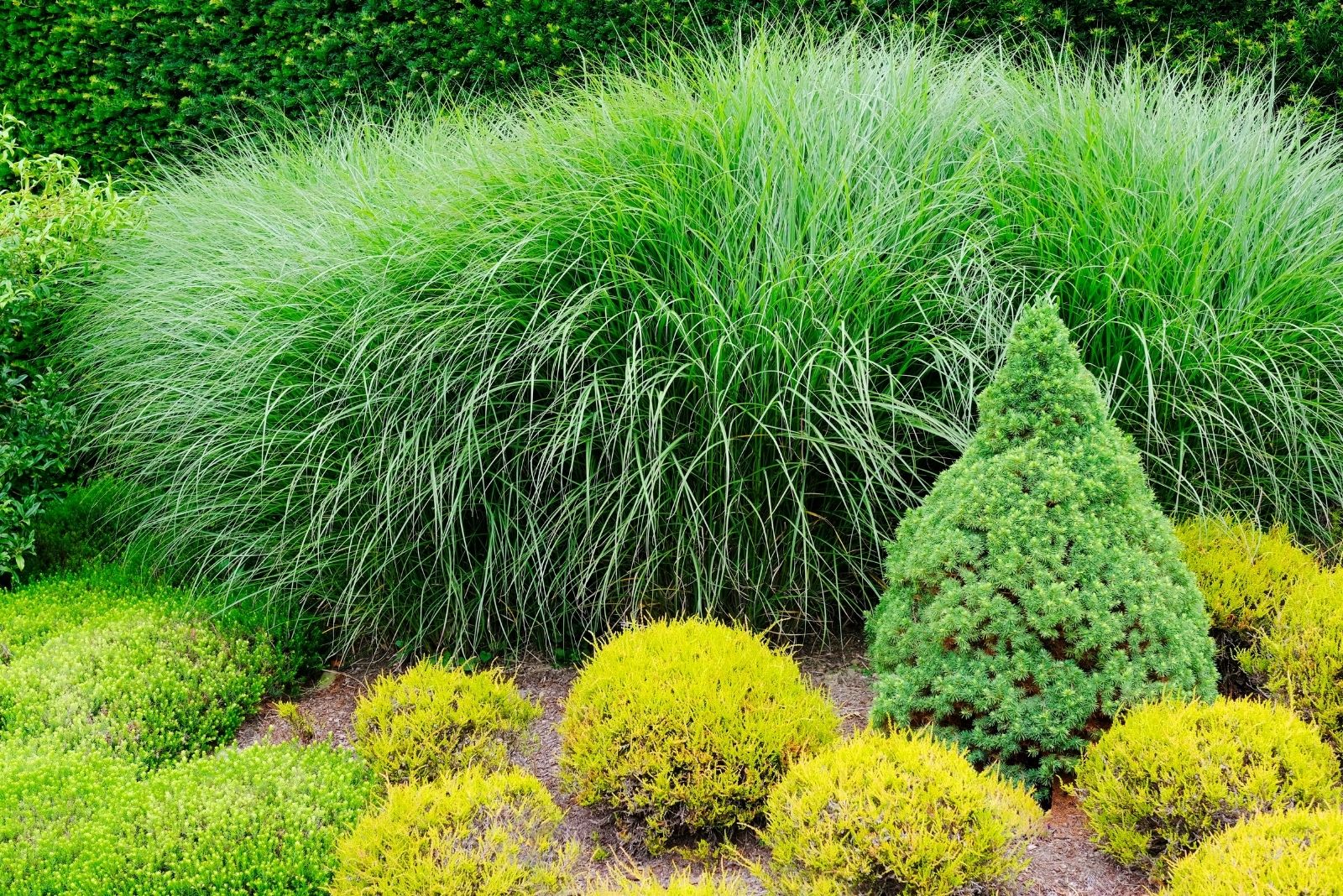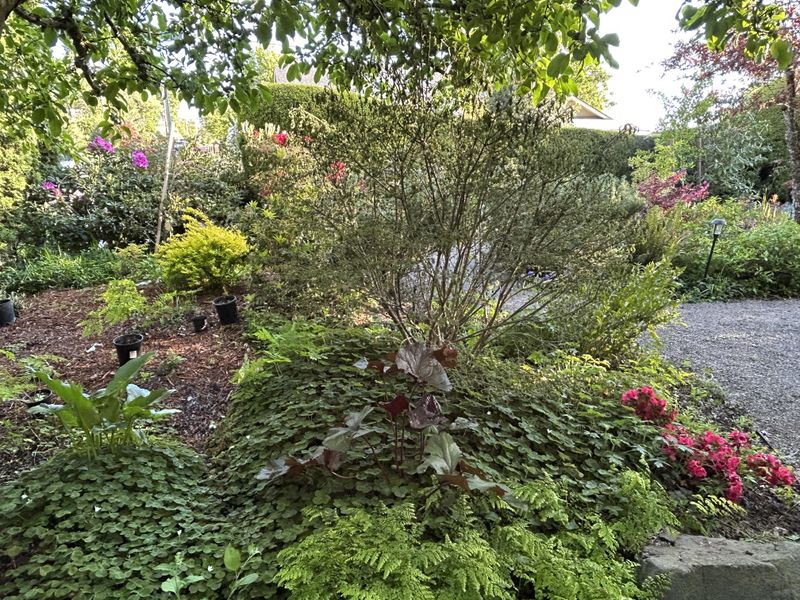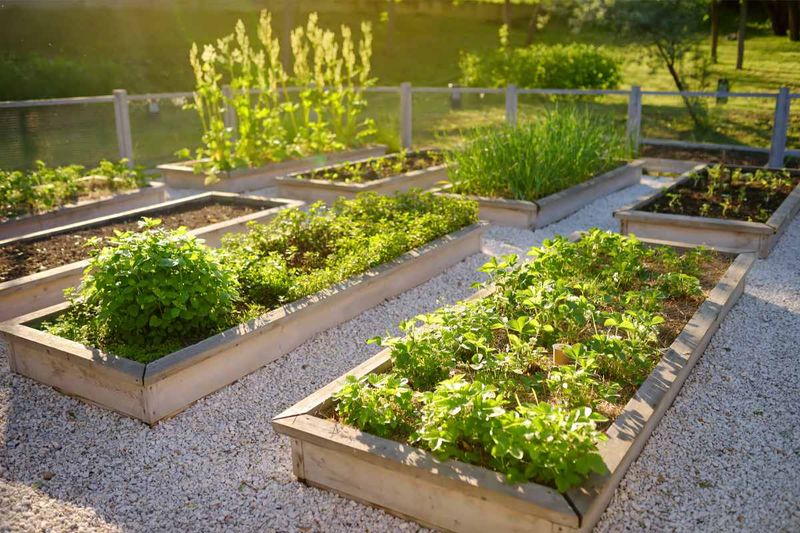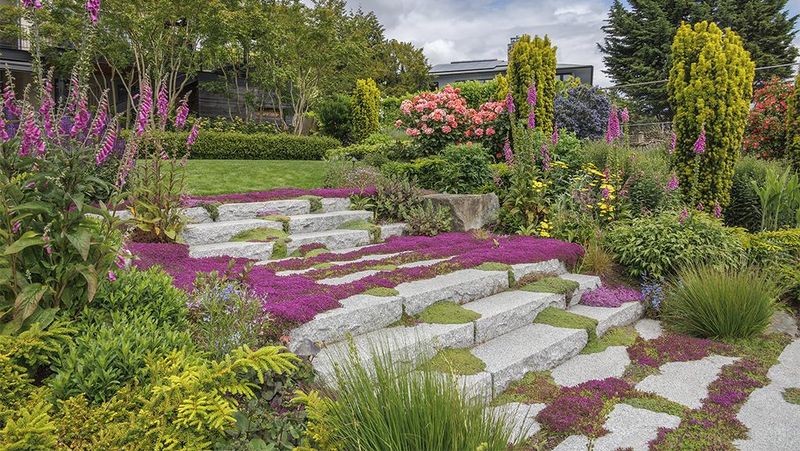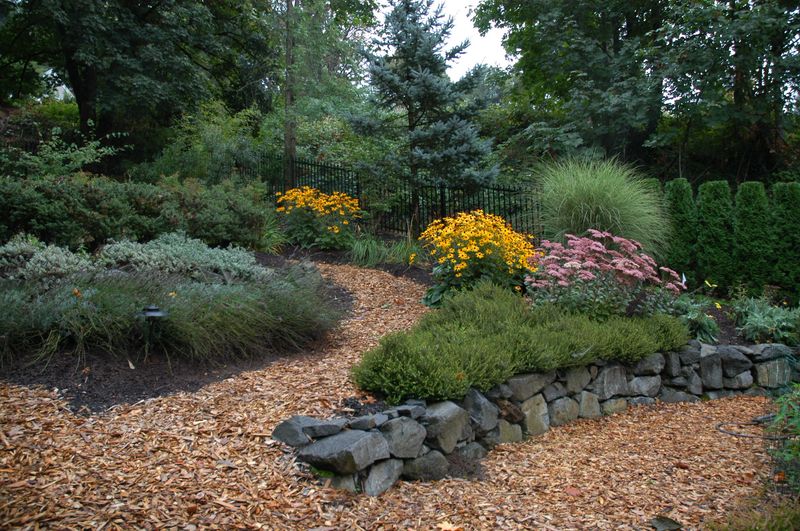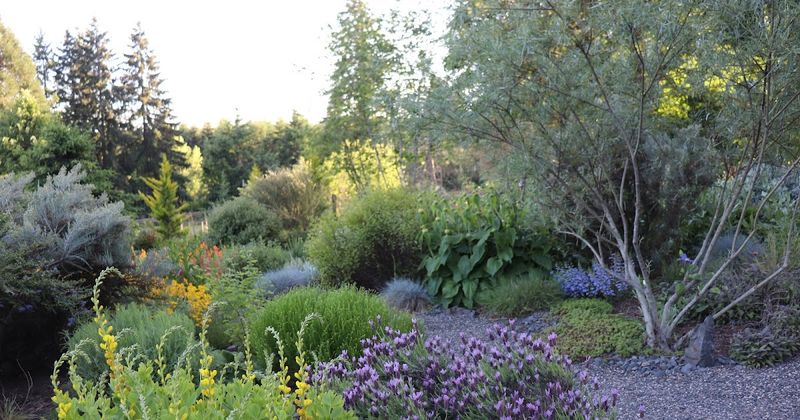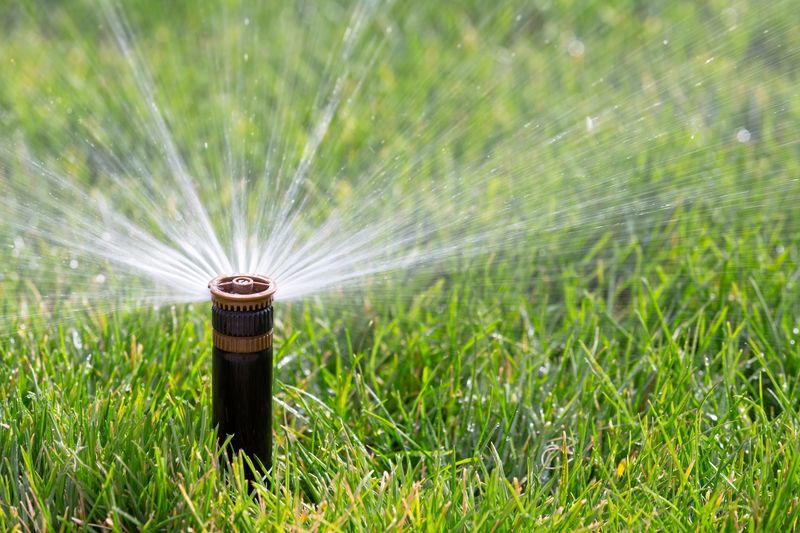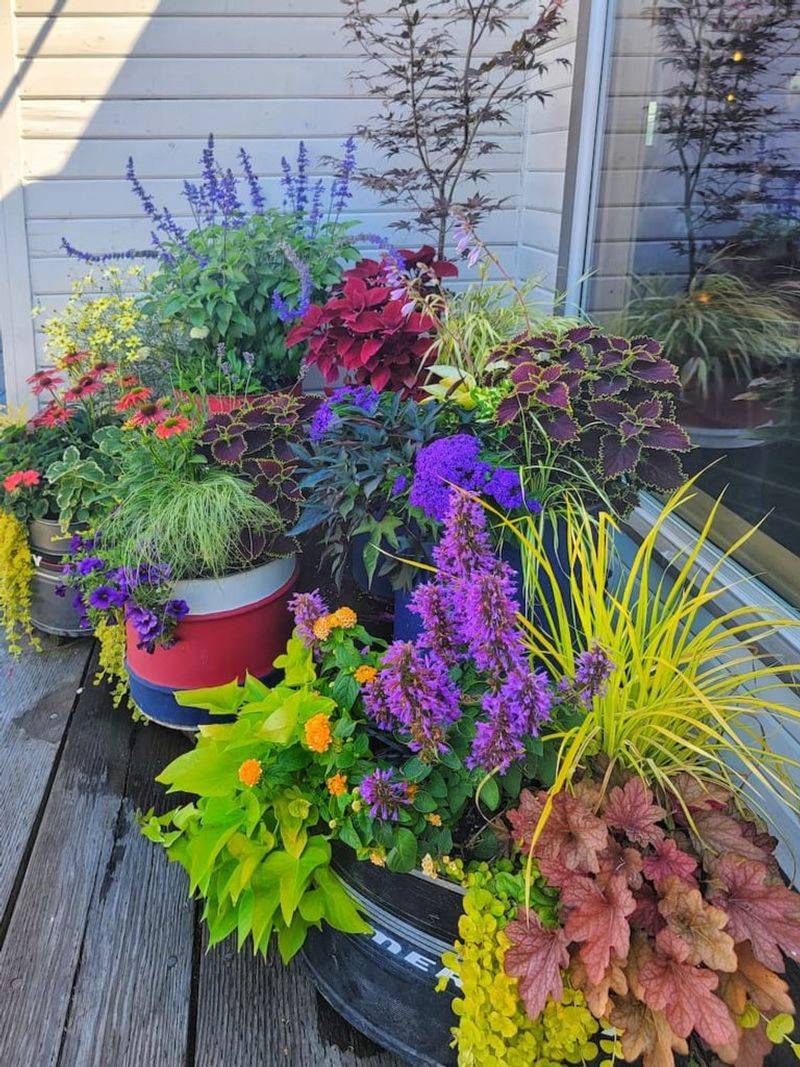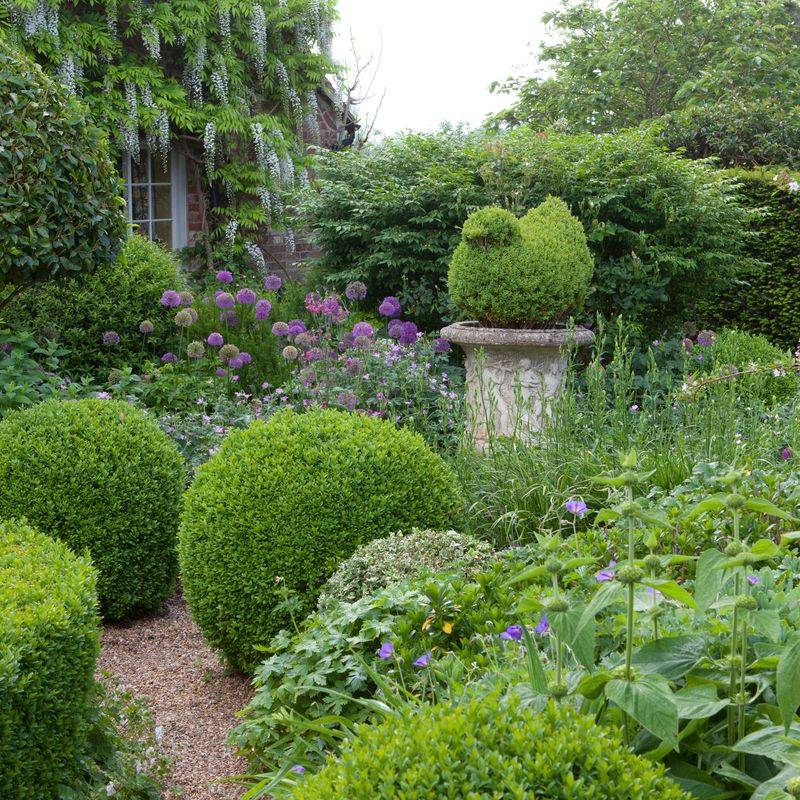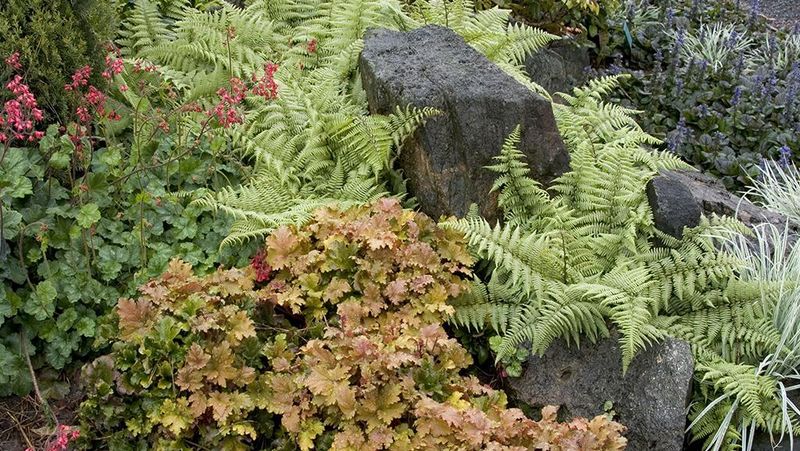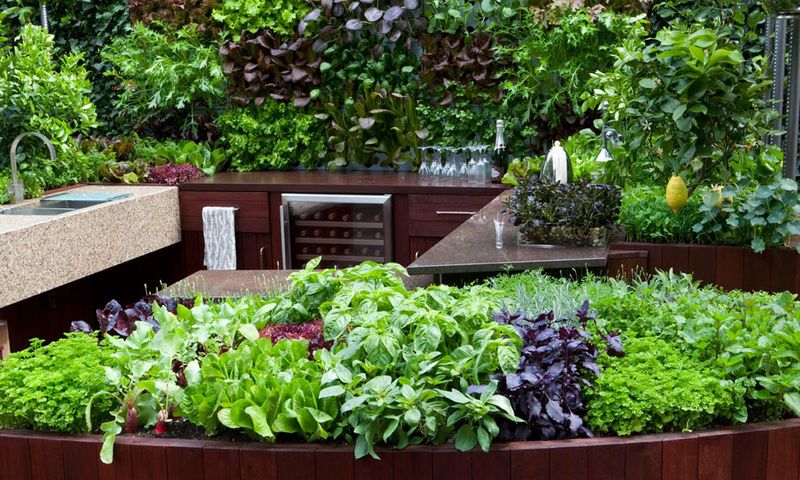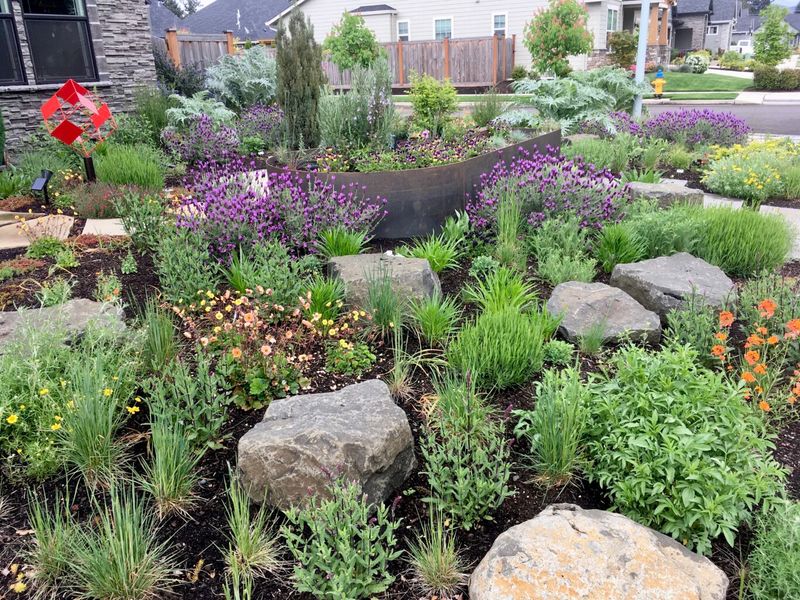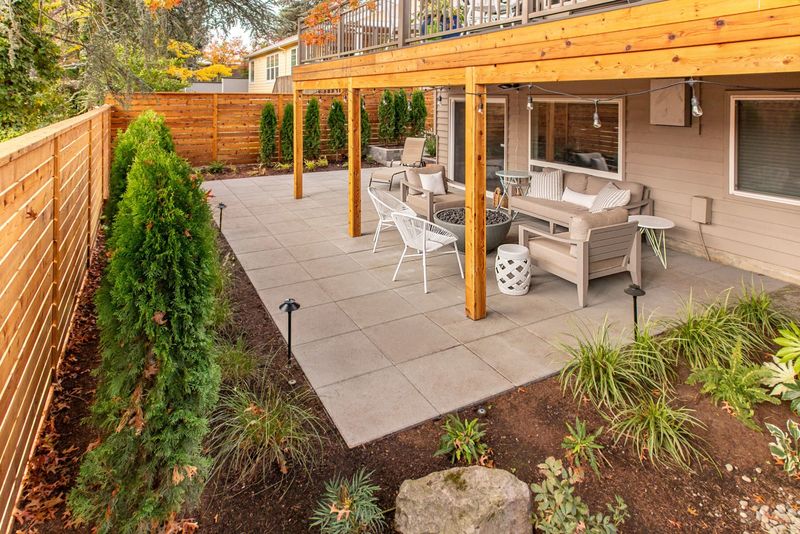Oregon’s climate offers a mix of lush possibilities and seasonal hurdles for gardeners. With plenty of rain in spring and fall—but dry spells in summer—finding balance is key. The good news? A beautiful, low-effort garden is well within reach.
By choosing native plants and drought-tolerant varieties, you can cut down on watering and upkeep. Mulching, smart placement, and grouping plants by water needs also make a big difference. It’s all about working with nature, not against it.
These low-maintenance garden ideas help busy Oregon homeowners enjoy vibrant greenery without giving up their weekends. Less weeding, more relaxing—that’s the kind of garden worth growing.
1. Native Plants That Thrive Without Fuss
After moving to Portland last year, I discovered how effortlessly Oregon’s native plants adapt to local conditions. Sword ferns, salal, and Oregon grape require minimal care once established.
During summer’s dry spells, these natives need far less supplemental water than exotic varieties. Their natural resistance to local pests means you’ll rarely need to intervene with treatments or sprays.
For best results, group natives with similar water and light requirements together in your landscape. This creates natural-looking plantings that largely take care of themselves.
2. Raised Beds: Easier Access, Less Weeding
My back thanks me every time I work in my raised garden beds instead of bending to ground level. Beyond ergonomics, these elevated growing spaces offer superior drainage and soil warming in Oregon’s often damp conditions.
Cedar boards make excellent long-lasting frames that resist our wet weather. Fill beds with quality soil mixed with compost to reduce future amendment needs and provide plants with optimal growing conditions from the start.
Space beds with wide paths between them for easy maintenance access and fewer weeds to pull throughout the growing season.
3. Groundcover Instead Of Traditional Lawn
Saying goodbye to high-maintenance grass transformed my Oregon garden routine. Creeping thyme, kinnikinnick, and blue star creeper create living carpets that need no mowing and minimal care.
When established, these groundcovers naturally suppress weeds by forming dense mats that prevent unwanted seeds from germinating. Most require watering only during extreme dry spells, unlike conventional lawns that demand regular irrigation.
For walking areas, leave stepping stones or pathways through groundcover sections to prevent damage from foot traffic while maintaining the seamless green appearance.
4. Smart Mulching Techniques
Discovering the power of proper mulching changed my Oregon gardening experience completely. A 2-3 inch layer of bark mulch, compost, or pine needles dramatically reduces weeding time while conserving soil moisture.
During our rainy winters, mulch protects soil from compaction and erosion. Come summer, it reduces evaporation and keeps roots cool. I refresh mine annually, usually in spring after soil has warmed.
Keep mulch pulled back slightly from plant stems and tree trunks to prevent rot issues in our humid climate. This simple practice prevents many common disease problems.
5. Drought-Tolerant Perennials For Summer Ease
Summers in Oregon can bring unexpected dry spells that leave garden owners scrambling to keep plants alive. Russian sage, lavender, and sedums sail through these conditions with minimal supplemental watering once established.
Group these water-wise performers together in full-sun locations where their silver foliage and colorful blooms create visual interest. Many drought-tolerant varieties also attract beneficial insects and pollinators to your garden.
For best success in our climate, plant these perennials in spring so they establish strong root systems before summer heat arrives. Your water bill will thank you!
6. Automatic Irrigation Systems Save Time
Installing a simple drip irrigation system with a timer revolutionized my Oregon garden care routine. Water goes directly to plant roots, minimizing waste and reducing the leaf moisture that can lead to fungal issues in our climate.
Modern systems can connect to weather sensors or smartphones, adjusting watering schedules based on actual conditions rather than rigid timers. This prevents overwatering during our rainy periods while ensuring plants get moisture during dry spells.
Focus drip emitters on new plantings and moisture-loving specimens while leaving established natives and drought-tolerant plants to fend more for themselves.
7. Container Gardens For Instant Impact
When I moved to Eugene, container gardening allowed me to create beautiful plant displays with minimal ground preparation. Large pots filled with soil-less mix provide perfect growing environments that limit weed problems entirely.
Choose larger containers whenever possible – they require less frequent watering and provide more root space. Self-watering varieties work especially well for busy Oregon homeowners who can’t water daily during summer dry spells.
Group containers near water sources for easier maintenance, and consider placing them on casters if they’re particularly heavy, allowing you to move them as sun patterns shift seasonally.
8. Evergreen Structure For Year-Round Good Looks
The backbone of my low-maintenance Oregon landscape comes from carefully placed evergreens that look good regardless of season. Compact varieties like ‘Little Chief’ western red cedar and ‘Soft Serve’ false cypress provide structure without outgrowing their spaces.
During winter months when deciduous plants go dormant, these steadfast performers continue providing visual interest and privacy. Most need pruning only once annually or even less frequently.
Position evergreens where they’ll block unwanted views or create windbreaks for more delicate plants. Their year-round presence means less seasonal replanting and more consistent garden appeal.
9. Shade-Loving Plants For Woodland Areas
Under the towering Douglas firs in my backyard, discovering the right shade plants transformed a problem area into a low-maintenance retreat. Ferns, hostas, and heucheras thrive in Oregon’s dappled woodland conditions with minimal intervention.
Once established, these shade specialists rarely need supplemental water except during extended dry periods. Their natural habitat is the forest floor, so they’ve evolved to handle leaf litter and compete successfully with tree roots.
For best results, amend planting areas with compost to help retain moisture and provide nutrients in these often challenging growing zones.
10. Edible Landscaping That Pulls Double Duty
Replacing purely ornamental plants with beautiful edibles changed how I view garden productivity in my Salem yard. Blueberries offer gorgeous fall color while producing fruit, and rosemary forms attractive evergreen hedges that flavor our meals.
Many edibles require the same care as ornamentals but provide harvests alongside their aesthetic contributions. Oregon’s climate particularly suits bramble fruits, herbs, and many tree fruits that need minimal spraying or special attention.
Incorporate edibles into existing beds rather than segregating them in a traditional vegetable garden for easier maintenance and more integrated beauty throughout your landscape.
11. Rock Gardens Minimize Weeding
Creating a rock garden solved the challenging dry slope problem in my Bend backyard. These distinctive landscapes pair perfectly with Oregon’s diverse geology while dramatically reducing maintenance needs.
Carefully arranged stones create microclimates where alpine and drought-tolerant plants thrive with minimal water. The rock coverage naturally suppresses weeds and retains ground moisture during hot summer days.
For authentic Northwest appeal, incorporate local stone types like basalt or river rock, and select plants that complement our regional aesthetic – penstemon, lewisia, and sedums make excellent choices.
12. Hardscaping Elements Reduce Planted Areas
Strategically incorporating a flagstone patio and gravel pathways reduced the planted area in my Medford garden by nearly half. These hardscaped elements require almost no maintenance beyond occasional sweeping or raking.
Local stone materials weather beautifully in Oregon’s climate and develop character over time without deteriorating. For path areas, consider permeable materials that allow rainwater to penetrate rather than run off during our wet winters.
Balance hardscaping with planting pockets where carefully selected specimens create focal points without creating vast areas that need constant attention.

